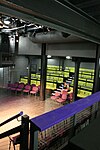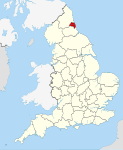GreyFriars, Newcastle-upon-Tyne
AC with 0 elementsMonasteries in Tyne and WearTyne and Wear building and structure stubsUnited Kingdom Christian monastery stubs
GreyFriars, Newcastle-upon-Tyne was a friary in Newcastle-upon-Tyne, Tyne and Wear, England, which was founded in Pilgrim Street in 1237, was sold after the Dissolution of the Monasteries, and then rebuilt as a private residence, as New Place and Anderson Place, before being demolished to become Grey Street.
Excerpt from the Wikipedia article GreyFriars, Newcastle-upon-Tyne (License: CC BY-SA 3.0, Authors).GreyFriars, Newcastle-upon-Tyne
Hood Street, Newcastle upon Tyne Grainger Town
Geographical coordinates (GPS) Address Nearby Places Show on map
Geographical coordinates (GPS)
| Latitude | Longitude |
|---|---|
| N 54.9735743 ° | E -1.6123509 ° |
Address
Castro's
Hood Street 3-5
NE1 6JQ Newcastle upon Tyne, Grainger Town
England, United Kingdom
Open on Google Maps









